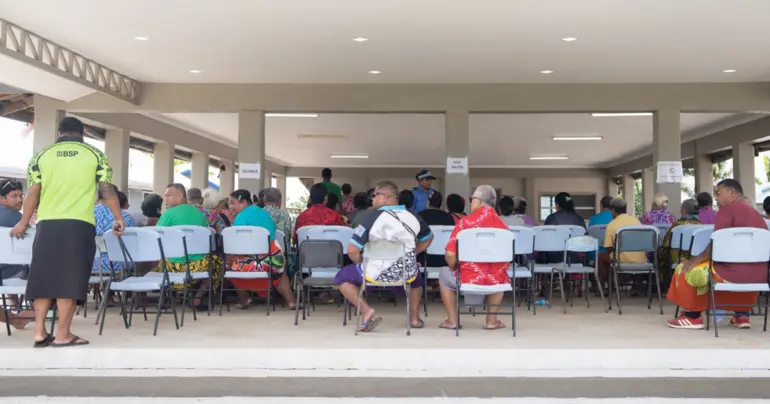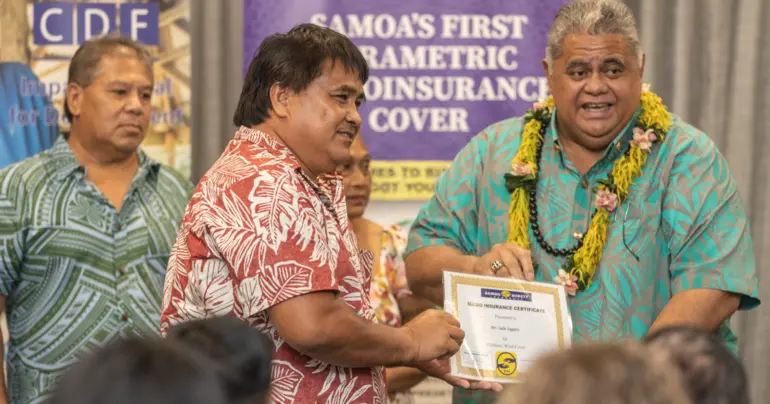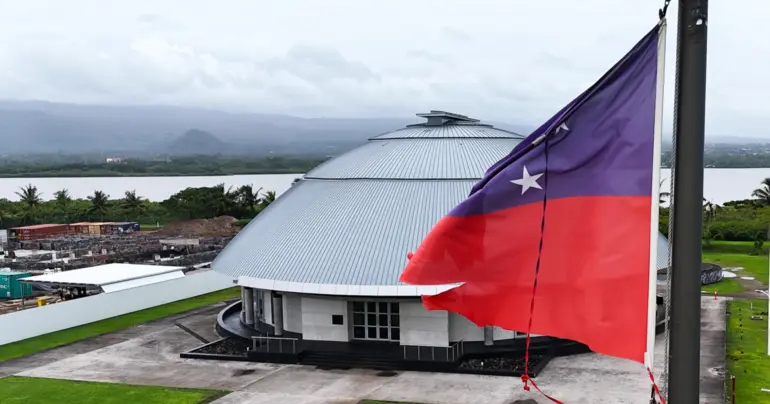The Pacific Engagement Visa in July and August: 2-1
We’ve been tracking the Pacific Engagement Visa or PEV since Labor announced it during last year’s election campaign. It was meant to be introduced by 1 July, but things got complicated when the Opposition decided they wouldn’t support this new visa – which would give 3,000 Pacific Islanders permanent residency in Australia every year. While Labor had the numbers in the lower house to get the PEV-enabling legislation through back in March, things are more complex in the Senate, and the bill has been stuck there ever since. It was meant to go to the Senate floor in the June sitting, but didn’t. Our last blog update was written on 5 July. What has happened since?
The PEV bill was tabled for the July-August Senate sitting, but again didn’t actually make it to the floor for debate and a vote. The only small progress was an amendment tabled by Senator David Pocock which, if accepted, would mean that the lottery which would be used to run the PEV, and which requires its own legislation, would not be used for humanitarian visas. That’s also a demand of the Greens, and one that should be acceptable to Labor.
The frustrating delay, and the confusing message it sends about support for the PEV, is definitely a negative. So, inspired by the recent women’s football world cup, I’m going to say that that puts the PEV one down on the scoreboard.
But there are also some positives. A second piece of PEV-relevant legislation was introduced to the House of Representatives on 10 August, the Social Services and Other Legislation Amendment (Australia’s Engagement in the Pacific) Bill 2023. While the lack of welfare benefits available to temporary migrants is well known, even permanent residents are normally denied access to several benefits for at least one year after they migrate, in some cases four years, and in some cases indefinitely. If this legislation passes, PEV arrivals will be able to access several benefits from day one. This will include immediate access, if otherwise eligible, to higher education and VET student loans (through the HELP and VET Student Loans scheme), to support while studying (Austudy and Youth Allowance), and to family tax benefit Part A (there is no waiting period for Part B). Access to these benefits also opens up potential eligibility for rental assistance and the Health Care Card.
Also worth noting is that this legislation will also provide benefits to Pacific families who accompany PALM (Pacific Australia Labour Mobility) workers. (Family accompaniment was another Labor promise, to PALM workers with a visa for one year or more.) Under the bill, PALM families would be eligible for the childcare subsidy and for the family tax benefit, Parts A and B. (PEV families, as permanent residents, already qualify for the childcare subsidy and family tax benefit Part B.)
This legislation, while not required to get the PEV off the ground, would, if passed, obviously make life in Australia better for PEV immigrants, and would make the visa even more popular. There would still be waiting periods for some benefits, most notably for unemployment payments (JobSeeker), but it is a significant package of support.
This new bill also places the Opposition in a difficult position. Will it oppose this legislation on the basis of a more general opposition to the PEV? Or will it not risk looking anti-Pacific?
His speech to introduce the new bill gave Pat Conroy, Australia’s Minister for the Pacific, space to rehearse the arguments for the PEV, specifically for its lottery, which is the aspect of the PEV the Opposition opposes. As the Minister said: While the ballot process has been the subject of debate already in this chamber, I cannot overemphasise the importance of the ballot process to delivering on the objectives of the program. A ballot process ensures fair and transparent access, and gives equal chance to higher and lower skilled applicants, ensuring we do not deprive Pacific countries of skills and talent.
This approach has been welcomed by Pacific partners during consultations. It provides broad access for Pacific and Timor-Leste citizens, including for applicants from remote and economically disadvantaged islands and regions.
So, there is real progress with this second piece of legislation being introduced, making the PEV score one all.
What tipped the scale to make the last couple of months a period of net progress for the PEV was the support the visa garnered in the Pacific. August saw the annual Forum Economic Ministers Meeting (FEMM) held in Suva. For the first time, the region’s economic ministers and top officials put labour mobility on their agenda. Temporary labour mobility got a mixed reception, with both the benefits and the costs noted. But, based on the read-out given at the closing press conference (the official communique is yet to be released), the PEV was simply ticked off with a welcome.
Fiji’s Deputy PM and Finance Minister Biman Prasad also spoke out at length in favour of the PEV at a public seminar held in conjunction with the FEMM.
All this is completely consistent with the wholly positive regional reputation of New Zealand’s long-established PEV equivalents, the Pacific Access Category and Samoa Quota. If and when Australia finally gets round to establishing it, the PEV’s reputation will travel along a similarly positive trajectory.
So, all up, although July and August were another frustrating couple of months for the PEV, they were also net positive ones, resulting in a scoreline for the month of two-one in its favour. However, the tournament is far from over, and the critical question of when and how the PEV legislation will pass through the Australian Senate remains unanswered. The Senate will next sit from 4 to 14 September.
This article appeared first on Devpolicy Blog (devpolicy.org), from the Development Policy Centre at the Australian National University. Stephen Howes is Director of the Development Policy Centre and Professor of Economics at the Crawford School of Public Policy, at The Australian National University.











